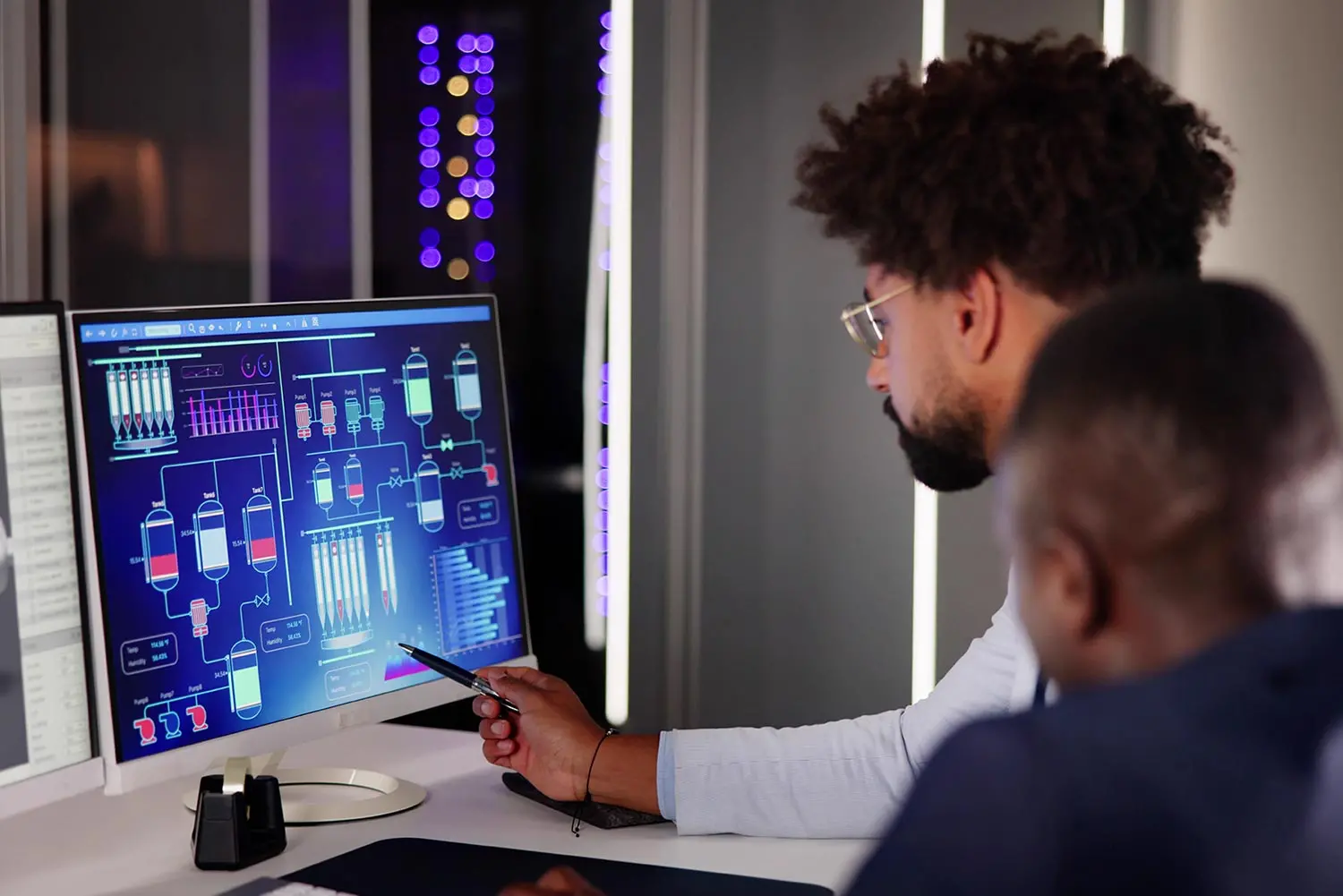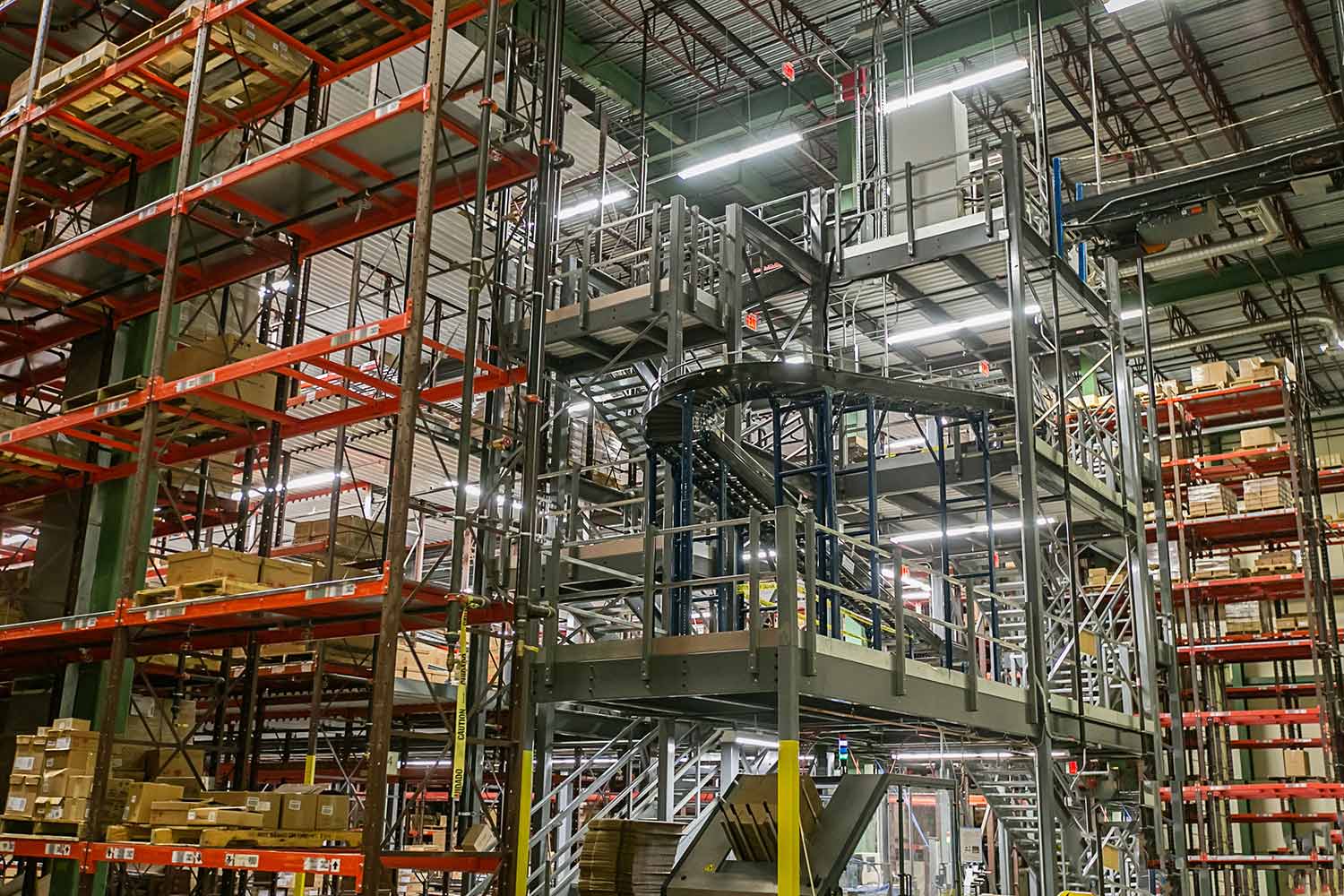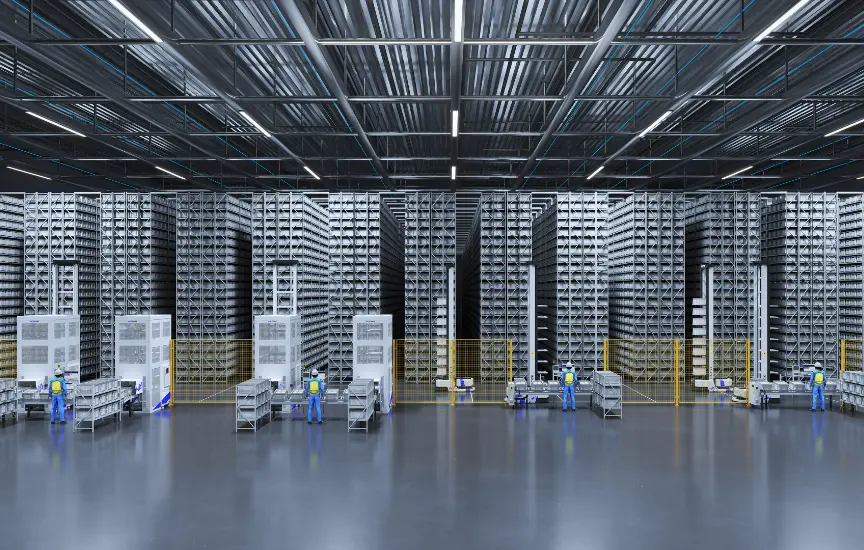
May 8th, 2023
5 min readWarehouse Robotics from A to Z
Technological innovations pave the way to a profitable future.
Warehouses are experiencing technological advancements that are making their operations faster, stronger, and more intelligent. And what’s more, the productivity of warehouse staff has been greatly enhanced by technological developments due to the implementation of robotic solutions.
We’ve seen major advancements in the past; from conveyors to vertical lift modules, new technology keeps on improving productivity, efficiency, and safety. Going forward, the companies that embrace innovation are the ones best poised to optimize profitability in the long run.
Robotics in Warehousing
Generally speaking, warehouse robots are machines that can perform actions or tasks normally completed by humans. In many cases, these are the more dangerous tasks, or highly repetitive tasks. Robots can do these tasks with less risk and fewer mistakes.
In some cases, robots perform tasks involving highly valuable items, thus reducing security issues. In most cases, however, robots provide higher efficiency and productivity by moving at the speed of e-commerce. Robots can increase throughput in most cases, and require less downtime because they don’t get sick or take vacations and can operate 24/7, 365 days a year.
Robotic Arms for Picking and/or Sorting
Robotic arms are what many people envision when the topic of warehouse robots comes up – and with good reason. Robotic arms and grippers are perhaps the most pervasive form of robot technology in the warehouse, having long been used (relatively) to increase efficiency, accuracy, and speed in picking, packing, and sorting.
AGVs and AMRs To Cover Large Areas
Automated Guided Robots (AGVs) are autonomous vehicles that are designed to move materials or products within a warehouse or manufacturing facility without human intervention. Guided by pre-programmed routes, AGVs are equipped with sensors and navigation systems that allow them to move around the facility and avoid obstacles in their path. Some AGVs are designed to pick up and move entire racks of products or pallets, while others are smaller and more agile, able to move individual items or containers.
AGVs offer several benefits, including increased efficiency, reduced labor costs, and improved safety, as they eliminate the need for human operators to transport heavy loads or navigate through busy warehouse areas.
Autonomous Mobile Robots (AMRs) are a bit more flexible and adaptable. They use onboard sensors and cameras to navigate through a facility and can adjust their routes on the fly to avoid obstacles or changes in the environment. Unlike AGVs, AMRs are not restricted to predefined paths or specific areas of a facility. They can be programmed to perform a wide range of tasks, such as transporting smaller loads or carrying out inspections, and are typically used for more complex or variable operations.
Cobots to Safely Work Alongside Humans
Collaborative robots, also known as cobots, are robots designed to work alongside humans in a shared workspace. Equipped with sensors and other advanced technologies that enable them to recognize and respond to the presence and movements of humans, cobots are designed to be safe and intuitive to work with, allowing them to operate in close proximity to human workers without endangering their safety. Cobots can be used for a wide range of tasks, such as assembly, inspection, packaging, and material handling.
One of the main advantages of collaborative robots is their flexibility and ease of use. They can be quickly reprogrammed to perform new tasks, making them ideal for applications with varying product lines or production schedules.
AI and Big Data Alongside Robotics in Warehousing to Improve Processes
Robots are only half the picture, though. Here’s how Artificial Intelligence (AI) and Big Data can be used alongside robotics to improve processes:
- Predictive Maintenance: AI can be used to analyze data from sensors to predict when maintenance is required. This can help avoid unexpected downtime and reduce repair costs.
- Route Optimization: Big Data can be used to analyze historical data on warehouse traffic and optimize robot routes. This can help to reduce travel time, increase throughput, and minimize congestion.
- Inventory Management: AI can be used to analyze data on inventory levels and demand patterns to optimize the placement of goods within the warehouse. This can help to reduce search times and improve overall warehouse efficiency.
- Quality Control: AI can be used to analyze data from sensors and cameras to identify defects in products as they move through the warehouse. This can help to reduce returns and improve overall quality control.
By using AI and Big Data alongside robotics in warehousing, businesses can improve processes, reduce costs, gain efficiencies, enhance customer satisfaction, and increase profitability.
Next Steps
Automation in the warehouse is used to streamline processes, such as receiving, returns, picking, sorting and shipping. Sources show that distribution and fulfillment industries will be exploding with new automation technology for the next decade. It’s imperative for businesses to take advantage by expanding into robotics and automation integration now.
Let’s talk and take the first step towards future-proofing your operations. Contact an IndPro specialist today to start a discussion. We’re here to help!
Related Posts

The Human-Robot Partnership Requires an Upskilled Warehouse Workforce
Article
Professional Integration is Crucial for Warehouse Automation & Robotics Implementation
Article